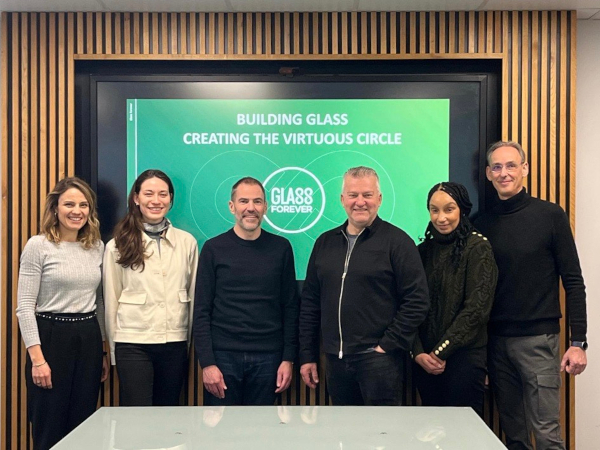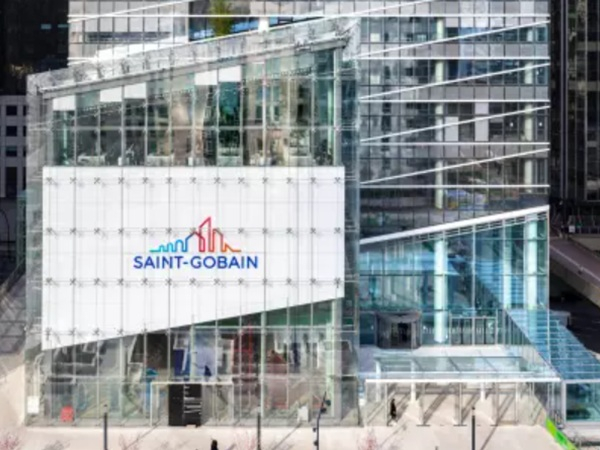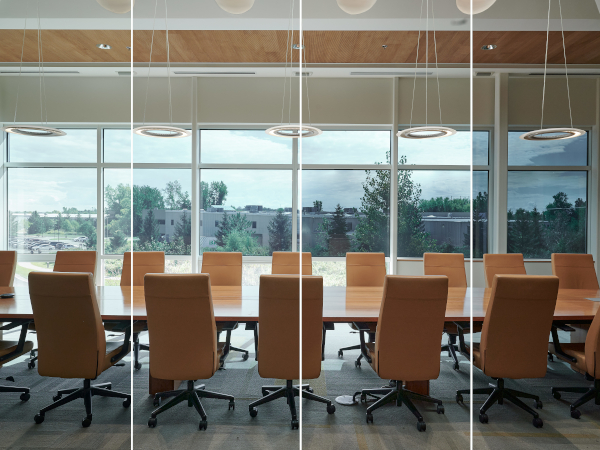Date: 29 May 2014
He is also an accredited expert in Evidence Based Design (EBD), in which his objective is to improve lives in healthcare environments through building design that uplifts and protects patients and staff.
.jpg)
We first met Elting during his work with the Butler County Health Care Center in David City, Nebraska, where he was completing a major renovation and a new Wellness Center project for the hospital. His firm applied Evidence Based Design principles to solve a variety of building challenges during the project, including improving the safety of patients in the acute care unit, improving the infection rates of the surgical unit, and creating a more health-promoting indoor environment in the new Wellness Center, thanks in part to the integration of SageGlass® dynamic glass into the facility’s exterior curtain wall. SageGlass, a product of Saint-Gobain, is electronically tintable glass that can be tinted or cleared to optimize daylight, save energy and improve the human experience in buildings.
The power to improve patient outcomes through better architecture became a life’s mission for Elting after a close relative lost a battle to infection following a severe work accident that burned over 90% of his body. Elting realized that Evidence Based Design could have an enormous impact on the survival rates of trauma unit patients by reducing the chances for infections to spread.
We caught up with Elting recently to share his ideas and philosophy about how EBD can create better built environments.
Q. First, could you explain for us in laymen’s terms what Evidence Based Design is?
Elting: Evidence Based Design is the process of using the best available scientific research to make building design decisions that can positively impact healthcare outcomes. It’s a certified architectural practice overseen by The Center for Healthcare Design. However, while the practice is largely focused on the healthcare industry, the same principles can be applied to things like creating better learning environments in schools, better work environments in office buildings, and so on.
Some of the important factors considered in EBD include the impact of the use of daylight and a connection to the natural world on human biology. We also consider things like improving the way people move through the built nvironment for safety and efficiency, ergonomics, and hygienic issues, which are important in hospitals.
Q. How does Evidence Based Design improve these environments?
Elting: Let’s start with something as simple as nature. Studies show that if you provide patients with a view of the natural world it reduces their need for pain medication, it shortens the length of their stay in the hospital, and it positively affects the circadian rhythms of sleep and alertness, among other benefits. Similar benefits are achieved when you expose patients to abundant natural daylight.
Q. Can you give me some examples of how you applied this principle in the Butler County Health Care Center?
Elting: For the new Wellness Center, we designed a nearly all-glass facility sited on a vista on the hospital’s south end that offers broad views of nature. Scientists who study this natural effect have concluded that it reaches back to our ancient history as early humans. It’s sort of in our DNA. They found that when you provide a view from an elevated position over broad expanses of fields with trees and water in the distance, it positively affects the mind/body reaction. It relates back to the peace-of-mind our ancestors had when they were able to see, from a safe place, where danger may approach and where their water, food and shelter may come from.
Providing abundant daylight for occupants was another key objective. But the southern exposure created a sun glare and heat gain problem, particularly during times when the sun was at a low angle. That’s why we used SageGlass. Using shades to control the sun would have blocked and negated the therapeutic benefits of both the natural light and the natural view.
We also used EBD in a redesign of the acute care patient wing. Patients falling down as they try to use the washroom or move about the facility is a big problem for all hospitals. We ran simulations and did workshops with the nursing and maintenance staff to study the flow, movements and locations of equipment, furnishings, etc. For example, it enabled to us to create an environment with large doorways and paths that can easily accommodate a patient using a walker as well one or two nurses on either side. The result has been an 80% reduction in patient falls.
We took a similar approach with the surgical department. We modeled the movements of surgeons and nurses and ran simulations on the circulation of sterilized and soiled materials and equipment during surgery to arrive at a new design that has dramatically lowered infection rates.
Q. So Evidence Based Design not only helps patients; it makes good business sense for hospitals?
Elting: Definitely. Things like patient falls can cost hospitals a lot of money. But more importantly, the ability to reduce medications and the length of stays in hospital rooms impacts a hospital’s bottom line.
A better built environment also benefits the staff as much as patients. Hospitals are stressful work environments. Daylight, views of nature, improved safety…all these factors help reduce fatigue, stress and mistakes. They also result in better Patient Satisfaction Scores, which the government uses to determine the quality of healthcare and reimbursement rates for a specific hospital.
Q. What led you to embrace Evidence Based Design in your practice?
Elting: I wanted to use the skills God gave me to improve the lives of others. The ability to change the outcome of an ill person by designing a building properly is a powerful motivator.
Too many architects simply go through the motions of creating a set of plans for contractors to build from. To me, that falls short of what an architect is capable of accomplishing.












Add new comment